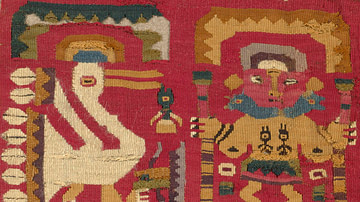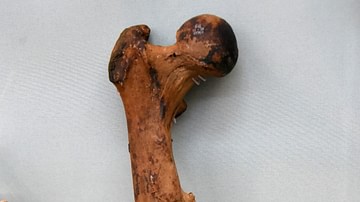Review

| Rating: | |
|---|---|
| Title: | Reading Practice: The Pursuit of Natural Knowledge from Manuscript to Print |
| Author: | Melissa Reynolds |
| Audience: | Professional |
| Difficulty: | Easy |
| Publisher: | University of Chicago Press |
| Published: | 2024 |
| Pages: | 318 |
In her book "Reading Practice: The Pursuit of Natural Knowledge from Manuscript to Print," Melissa Reynolds follows a "paper trail" of historical figures in early modern Europe to gain insight into how they understood the natural world. Using books, manuscripts, and other textual artifacts, Reynolds investigates how intellectuals, scientists, and scholars of the time interacted with and made sense of their lives and landscapes.
The key purpose of Melissa Reynolds's first book, Reading Practice: The Pursuit of Natural Knowledge from Manuscript to Print, is to explore how readers interacted with texts and manuscripts related to natural knowledge and how the readers interpreted and applied the knowledge from these works to their daily lives. Reynolds does this helpfully and engagingly that features interdisciplinary connections. Reading Practice provides a detailed analysis of how reading and textual practices influenced the pursuit of natural knowledge during a transformative period in European history.
This book will be a delightful experience for any readers interested or researching bloodletting or the influence of thunder and celestial bodies on humanity and health. A cultural historian of early modern and medieval Europe, Melissa Reynolds has a wide range of interests in fields such as the history of science and medicine, gender studies, and historical texts. Specifically, she is keenly interested in studying the transmission of natural medical and scientific knowledge from noble cultures to the ordinary 'commonfolk' of the past, as well as the subsequent cultural shifts that resulted from this dissemination. She is currently Assistant Professor of Early Modern European History at Texas Christian University.
This book prominently features concepts related to astrology, feminine insights that were frowned upon yet sought after by common men, superstitions, religion, and prognostications. The author extensively analyzed a corpus of 182 manuscripts to inspire the book. These primary sources, which she discovered over a decade of research on multiple continents, build up her argument around "natural knowledge." Natural knowledge is defined as an understanding of the natural world based on observation, study, and experience, including aspects of medicine, science, and the environment.
During the early modern period, common English people created and shared practical knowledge from texts like almanacs, herbals, and medical recipes. This book explores how they used the skillfully crafted and sometimes artistic manuscripts to learn about health, nature, and their place in the universe.
Reynolds examines the transition from Latin manuscripts to Middle English folios, the emergence of printing, the development of critical thinking, and the origins of what would become copyright law. This book is valuable for historians, librarians, academics of early modern science and medicine, and others interested in the evolution of literacy and natural knowledge during this era. The text includes notes on transcriptions and manuscript titles, along with a comprehensive list of all figures and tables featured in the book.
To understand how people in the Middle Ages sought out and viewed information and the world around them, the author highlighted certain portions of the text with illustrations from the manuscripts in her corpus. Created during a time when the printing press was yet to be invented and religious beliefs were often a matter of life or death, the illustrations on the pages of parchment were symbolic in the sense that they were utilized by those who were unable to read or write.
Ancient visual calendars and pictorial tables detailing zodiac signs and how they correspond to human anatomy or visual prognostications of weather patterns are only some of the images within this book. Reynolds guides readers on a historical and scientific journey that harkens back to a simpler era, revealing the circulation and recirculation of ancient texts over time.
The author asserts that the common folk of England were well aware that the divine, who "granted virtues to be in words, in stones, and in herbs," backed up some powerful remedies created by the combination of actions and ingredients (82). This book is highly recommended as it is remarkably unique, especially at a time when the art of creating bold-lettered manuscripts has now been replaced by graphic design and word processing programs. Engaging with this book will enhance a reader's comprehension of exactly how knowledge was passed down throughout history and the significant impact of this transmission on intellectual and cultural development.
Cite This Work
APA Style
Anne, K. (2024, October 11). Reading Practice: The Pursuit of Natural Knowledge from Manuscript to Print. World History Encyclopedia. Retrieved from https://www.worldhistory.org/review/476/reading-practice-the-pursuit-of-natural-knowledge/
Chicago Style
Anne, Kimberly. "Reading Practice: The Pursuit of Natural Knowledge from Manuscript to Print." World History Encyclopedia. Last modified October 11, 2024. https://www.worldhistory.org/review/476/reading-practice-the-pursuit-of-natural-knowledge/.
MLA Style
Anne, Kimberly. "Reading Practice: The Pursuit of Natural Knowledge from Manuscript to Print." World History Encyclopedia. World History Encyclopedia, 11 Oct 2024, https://www.worldhistory.org/review/476/reading-practice-the-pursuit-of-natural-knowledge/. Web. 25 Apr 2025.


